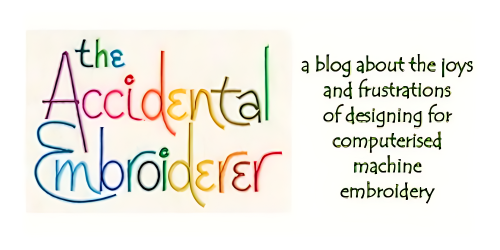The non-cubist bird
Right – the PC has been coaxed back to life, and things seem back to normal. But the crisis reminded me that my back-up routine had been sketchy to say the least. Most of my older designs had been backed up, but not all of them, and not the more recent ones. So I immediately backed EVERYTHING up to a small portable hard drive. You never think that computer crashes can happen to you, but even in these days of improved computer reliability it can, so never skip your regular back-ups the way I did
A few weeks ago I was playing around with the idea of a bird done in a cubist style, and I did a few sketches of some roughly cubist birds. Most of them weren’t really in a genuinely cubist style, but I thought they still might make interesting embroideries so I’ve started digitising them Here’s a sketch of one of the non-cubist birds
Not cubist, but with possibilities
and here’s the first version of the embroidery.
The bird digitised and stitched out, using hand-painted fabric
It was really a very simple design so it seemed to ask for some added complexity in the form of some painted fabric. I haven’t got the colours right, some of the details need changing (for example,the "shoulders" are wrong, and the shape of the neck in the sketch is better than in the embroidery) and of course the background should also have some added interest painted in, but all the same it’s an interesting start which I’ll continue with
